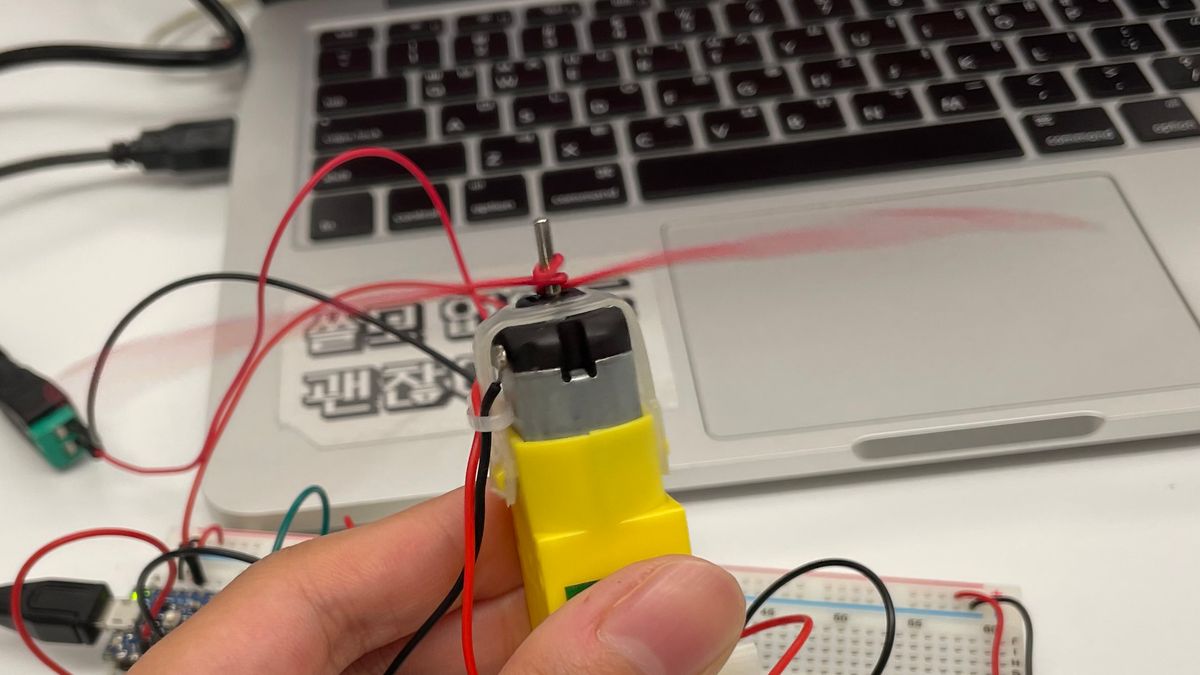
Week 11: Motors
Using a transistor to connect a DC motor to power (Success)
Using DC motor requires high current power supply, which means we need an external power source from a DC adaptor. I used a MOSFET N-channel transistor and 1N4001B diode to control the external power supply coming from a 12V AC/DC adaptor.
The motor worked well, but controlling it with a potentiometer didn't work out well. One of the reasons I am suspecting is that I am using a 12V power adaptor while the motor is 5V. This might have made the motor spin too fast, which makes it still run fast even when the potentiometer value is set to zero.
Using a DC motor with H-bridge (Failed)
Next, I tried to control the motor in different directions using a H-bridge. Unfortunately, this attempt failed. Unlike the previous attempt, my laptop couldn't detect the Arduino Nano IoT 33 that was connected to a USB port. While trying to figure out the problem, I discovered the Arduino Nano was getting very hot, so I had to stop before I blew up anything.
Using a stepper motor with H-bridge (failed)
Finally, I tried making a stepper motor work with a H-bridge, but this attempt failed. This time, my laptop could detect the Arduino well (fortunately, the board didn't blow up). I connected the AIN1, AIN2, BIN1, BIN2 pins to the Arduino Nano's digital pins 2,3,4,5 respectively. However, the stepper motors didn't work like the previous attempt.
*Thanks to help from Yeseul Song, I learned that the overheating problem might be because I used a 12V 5A power adapter which had too high current. I will try getting another power adapter with lower current such as 2~3A.